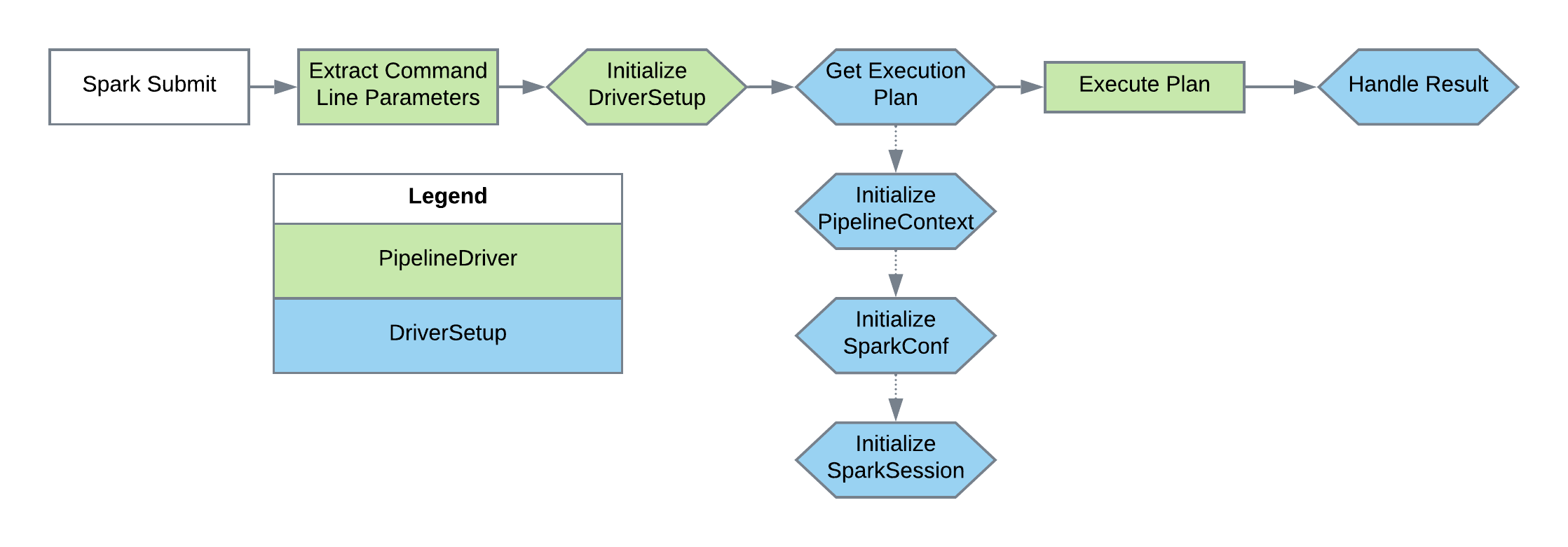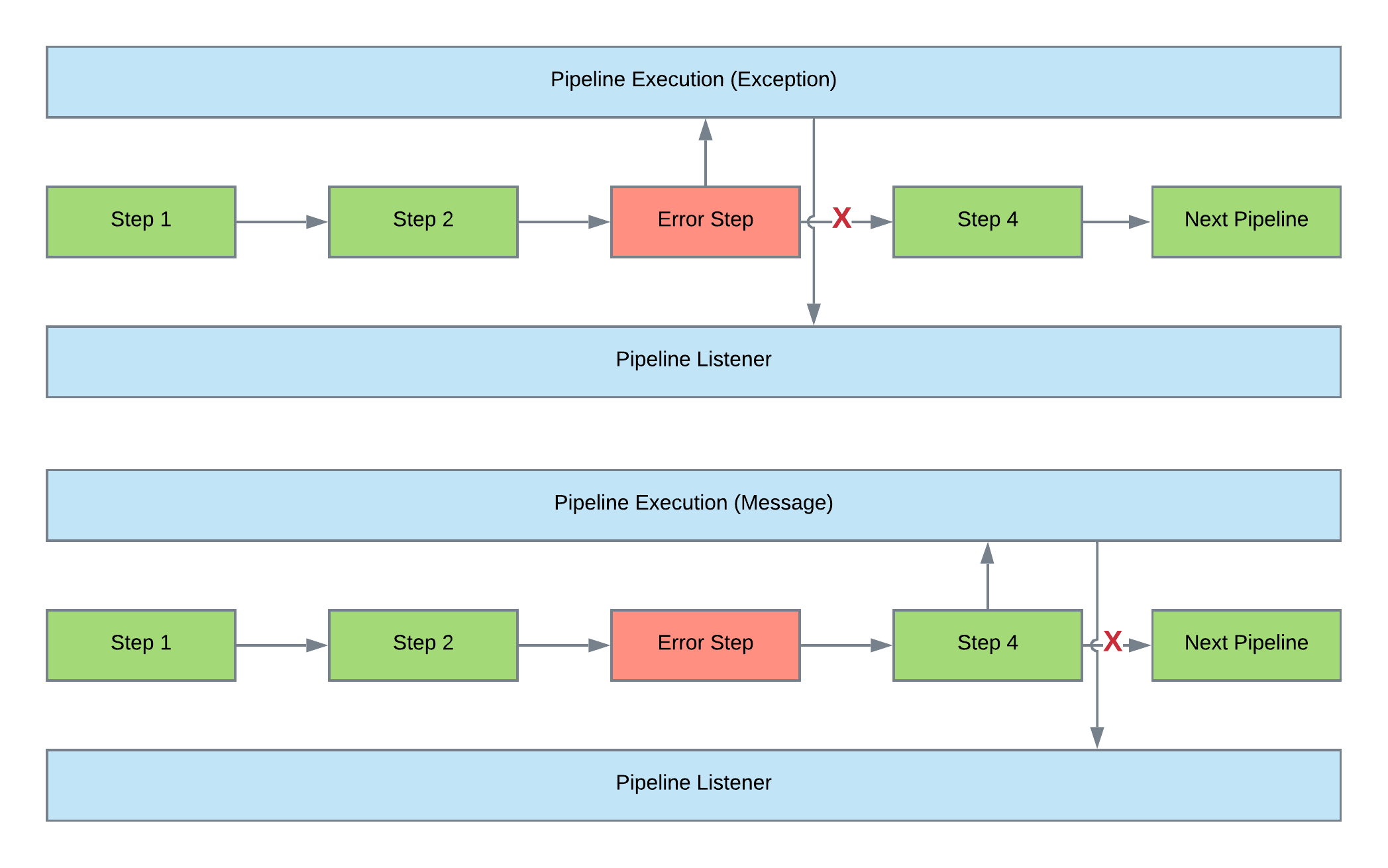Error Handling
Metalus provides several mechanisms for handling errors. Each method provides different behaviors and should be used together to provide a comprehensive solution.
Execution Result Handling
The DriverSetup trait provides the function handleExecutionResult which is called by the driver upon completion of an execution plan. The default behavior will scan the results of the execution looking for any exceptions not handled by the application. The application parameters maxRetryAttempts can be used to retry an execution if it fails but does not have an unhandled exception. The default is 0. The application parameter terminateAfterFailures can be used to indicate an exception should be thrown when all retries are exhausted. The default is false indicating the application should stop running. Developers wishing to change this behavior can provide a custom DriverSetup.

Next Step Error Handling
A step which defines the nextStepOnError attribute will force the execution of the defined step id instead of the normal execution path. A PipelineStepException will be set as the PrimaryStepResponse for the failed step. Normal execution will proceed from the defined error handling step. The primary response of the step in error will be the exception and can be accessed using the LastStepId variable. This method of handling errors is useful when the pipeline needs to perform some cleanup, the exception needs to be parsed, or a different execution path needs to be followed.
The flow depicted below shows how the nextStepOnError would fow for a simple pipeline. The first two steps (1 and 2) both execute normally and invoke Error Step. The Error Step will throw an exception which will invoke the Error Handler step and then complete the pipeline. Step 4 will never be executed when there is an exception. Metalus will consider this as a successful execution.
Step Retry
A step which defines the retryLimit attribute will be automatically restarted when an exception is thrown. Once the limit has been reached, the nextStepOnError will be invoked or the exception will be thrown to stop the pipeline.

Pipeline Exceptions
Metalus uses the PipelineStepException trait as the base for application exceptions. Any exception that extends the PipelineStepException trait will automatically be handled by Metalus. Pipeline exceptions stop the pipeline from processing at the specific step where the issue occurred. There are three implementations provided each with different behaviors:
Developers should extend these exceptions to provide more specific information.
The flow below shows the difference between how an exception versus a message stops processing. The top flow shows how an exception will stop processing in the middle of a pipeline. The bottom flow shows how using a step message will allow the pipeline to complete, but not execute the next pipeline in the chain. In both flows, the PipelineListener will be called with the exception.

PipelineException
This exception is the most common and is used to stop processing and indicate an application error has occurred. The retry behavior defined by exception result handling will tag this execution as failed.
PauseException
This exception is similar to the pipeline exception except that it will flag the result as paused and be treated as a successful application execution.
ForkedPipelineStepException
This exception will be thrown by fork blocks. Each exception thrown within the fork block will be captured and grouped. The exceptions will be logged, and the execution flagged as failed to be handled like the pipeline exception.
Step Messages
Step messages will be evaluated after each pipeline in the chain have completed without throwing an exception. The error and pause type messages will throw an exception using the message as the exception message. The error type will throw a pipeline exception while the pause type will throw a pause exception. This method of error handling is useful when the pipeline should complete, but processing should be stopped.
Pipeline Listener
Any exception thrown during the execution of the pipeline will be registered with the PipelineListener registerStepException function.